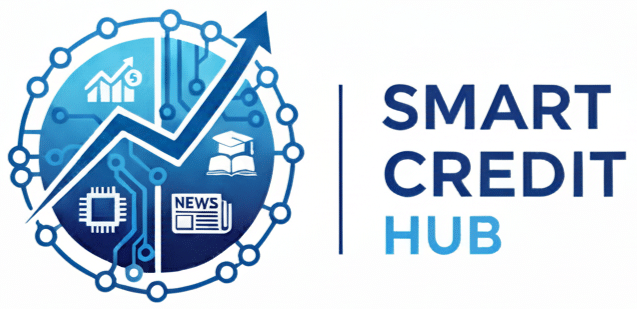Almost 70% of workers with a formal personal development plan say they are happier at their jobs. They also know where their careers are heading. This statistic comes from the U.S. Office of Personnel Management.
A personal development plan is a detailed guide created by individuals. It helps turn dreams into actions. It lists goals, skills to learn, deadlines, and major steps. This way, people can focus on improvement and track how well they are doing.
Related content:
You will stay on the same website.
Using a PDP is a way to get better at setting realistic goals. It teaches you to see mistakes as chances to learn. Students, young workers, and those at mid-career stages often get advice to use a PDP. It gives them a clearer direction in life.
A PDP boosts your drive, makes it easier to see your advancement, and lays out a clear route to reach your personal and work goals.
Understanding Personal Development Plans
A personal development plan shows where you are now and where you want to be. It talks about skills, goals, and actions that help with learning and career choices. This brief guide outlines what it is and why it matters, then goes into how it works.
Definition and Purpose
A personal development plan is a written record of your abilities, dreams, and steps to improve. Its goal is to direct your growth, align everyday actions with future goals, and choose wisely in work and life. Employers, schools, and online courses from places like LinkedIn Learning and Coursera encourage using these plans for better learning paths.
Key Components of a Personal Development Plan
Important parts of a plan include a vision for yourself, goals for now and later, and SMART objectives. A list of skills shows what you’re good at and what needs work. Plans also detail how to learn more, through training or practice, and set timelines and ways to check progress.
Improving skills is vital. PDPs point out areas like communication, leadership, and tech knowledge. You might take courses, get coaching, or work on specific projects to get better.
Finding out what drives you is another big piece. Using tools like value checks, personality tests, and writing about your thoughts helps understand your true passions and talents.
Importance of Having a Personal Development Plan
A personal development plan helps focus your efforts and celebrate small successes. It makes unclear goals clear by outlining specific steps to take. This helps both teams and individuals make better career choices and saves time.
Benefits for Personal Growth
Such a plan promotes lifelong learning and increases self-awareness. It enables you to track your habits, manage your time better, and strengthen your mental health.
It also fosters a growth mindset. This mindset helps balance your ambitions and the need for self-care. Keeping track of victories and learning from setbacks leads to consistent progress.
Benefits for Professional Development
In a job setting, a personal plan helps focus on developing specific skills and making clear career paths. Employees with a plan usually are more involved and perform better.
Keeping a record of goals and successes makes it easier to talk about promotions. It also makes planning your career clearer. Companies that support these plans often have happier employees and get more work done.
Cross-cutting advantages
A personal development plan also eases career changes. It keeps a log of activities that meet job expectations and supports ongoing career growth.
How to Create an Effective Personal Development Plan
Starting a personal development plan means being clear about your goals and being honest with yourself. This guide offers a path for finding out more about yourself and making real progress.
Following a simple process can turn big dreams into steps you can act on. This method includes proven tools and a guide. It helps organize your time, resources, and check-ins.
Step-by-Step Guide
Start by looking at what you’re good at, what you value, and what interests you. A SWOT analysis can map out your strengths, weaknesses, opportunities, and threats.
Write a short vision of where you see yourself in one to five years. This vision will help guide your decisions and keep your plan on track.
Then, break down your vision into specific goals. Figure out what learning, courses, mentorship, or projects you’ll need to achieve these goals. Plan your resources and set deadlines for each action.
Make sure you check your progress regularly. Weekly or monthly reviews can help you tweak your plan as needed.
Setting SMART Goals
Turn unclear goals into clear ones with SMART goals. They should be Specific, Measurable, Achievable, Relevant, and Time-bound.
For example: Finish a public speaking course in six months and give three talks at local events. This goal is clear, measurable, and has a deadline.
Setting short-term checkpoints can help you keep track of your progress. Weekly tasks and monthly goals can keep you moving forward without feeling overwhelmed.
Identifying Strengths and Weaknesses
Use feedback from all around, performance reviews, personality tests, and reflection to understand your strengths and weaknesses. These tools help you see yourself more clearly.
List both your technical skills, like Excel or coding, and soft skills, such as empathy or negotiation. Focus on the areas that will most benefit your career or personal goals.
Look into affordable or employer-paid resources to improve your skills. Online platforms like Coursera, Udemy, Khan Academy, or local classes and certifications can be great options.
Some advice: break down big goals into weekly tasks, block out time for learning, and do quick reviews to note what you’ve learned. This approach helps you keep making progress and discovering more about yourself.
| Step | Action | Tools / Examples |
|---|---|---|
| Self-Assessment | List skills, values, interests; complete SWOT | 360-feedback, personality tests, performance reviews |
| Vision | Create a concise one- to five-year statement | Vision worksheet, journaling |
| Goal Setting | Write SMART goals with clear deadlines | SMART template, examples like course + presentations |
| Learning Plan | Identify courses, mentors, practice activities | Coursera, Udemy, Khan Academy, community college |
| Scheduling | Allocate time blocks and milestones | Weekly planner, calendar apps, time-blocking |
| Review | Regular check-ins and adjustments | Monthly reviews, progress metrics, feedback sessions |
Tools and Resources for Personal Development
Choosing the right tools can make any personal development plan effective and long-lasting. Learners get more out of a mix of teaching, studying alone, and real practice. These resources cater to all learning styles and budgets, aiming at growing measurable skills.
Online Courses and Workshops
Online platforms like Coursera, edX, LinkedIn Learning, and Udemy offer courses on both technical and soft skills. Bootcamps and workshops at community colleges provide intense learning in coding, design, and certification with a teacher leading the way.
Practicing skills in real situations builds expertise. Toastmasters is great for improving public speaking. Short workshops provide a chance to use what’s learned online and polish a personal development plan with feedback.
Books and Audiobooks
Books are key for thorough learning. Recommended reads include Carol Dweck’s Mindset, Stephen Covey’s The 7 Habits of Highly Effective People, James Clear’s Atomic Habits, and Brené Brown’s Rising Strong. Each book aids in different growth areas, like changing your mindset or building new habits.
Audiobooks and ebooks offer flexibility. They’re perfect for learning during commutes or while exercising, helping keep up with personal development despite a busy schedule.
Mentorship and Networking Opportunities
Mentorship boosts progress through personalized advice and responsibility. Formal programs at work match employees with seasoned peers. Industry groups like the American Marketing Association help find mentors in various fields.
Networking opens new views and chances. Alumni networks, Meetup chapters, and conferences are great for making connections that aid skill growth over time.
Other tools support daily habit building. Apps like Habitica and Streaks promote regular practic. Tools like Trello and Notion help organize tasks related to specific goals. Podcasts on self-improvement provide continuous inspiration and ideas.
When picking resources, match them to your goals, financial plan, and how you like to learn. A combination of online courses and live workshops, with coaching or mentoring, offers a solid mix of knowledge and application. Regularly check your choices to make sure they fit your evolving personal development plan.
Implementing Your Personal Development Plan
To start your personal development plan, you need clear goals and a solid routine. It’s about making your goals into steps with deadlines. It also means blocking out time to develop yourself and keeping track of your progress in a simple way.
Creating an actionable timeline
Begin by breaking down big goals into smaller parts. Think daily habits, weekly tasks, monthly checkpoints, and quarterly reflections. This method helps keep you moving forward and turns planning into something you can actually do.
Using a Gantt chart can help with complex projects. And setting small goals gives you quick victories. Block off time in your calendar to focus on growing, keeping it safe from other demands.
The Pomodoro technique is great for keeping focus. Link up tasks with Google Calendar or Apple Calendar for automatic reminders about important milestones.
Regular evaluation and adjustment
Review your progress every month or quarter to see how you’re doing. Always base your review on clear evidence.
Have one main document for your plan, like in Google Docs or Notion. Write down what actions you’ve taken, any progress, and what you’ve learned. This makes tracking your growth easy and clear.
Match your plan’s milestones with regular check-ins. This can be through mentor meetings or peer reviews. It helps to adjust your plan as needed, changing strategies or efforts where necessary.
Overcoming Challenges in Personal Development
Starting a personal development plan is easy, but real challenges soon appear. Things like time limits, fear of not succeeding, wanting everything to be perfect, and having too many things to do can stop you. Work and family responsibilities also make it hard to focus on learning and growing.
Common Barriers to Success
Not having enough resources or clear goals can slow you down. If your goals aren’t clear, you might start putting things off. Wanting everything to be perfect can make small problems seem like reasons to give up. When teams are stressed, they might not focus on learning unless their bosses help and make space for it.
Strategies to Stay Motivated
Connect your goals with what matters to you. This helps you keep wanting to push forward. Adding small tasks to your routine and celebrating little achievements makes it easy to keep going. This also helps you think in a way that expects growth and improvement.
Keeping track of your progress helps you see how far you’ve come. Making promises to others and having friends hold you accountable reduces slipping up. People who set aside time to learn every week see better progress.
Change your goals if your life changes. Hand off less important tasks to make room for learning. Ask your boss for time or money for learning to get past money worries. Use reminders and apps to help you stay on track.
| Barrier | Practical Fix | Outcome |
|---|---|---|
| Time constraints | Schedule fixed “learning hours” and block calendar slots | Consistent progress tracking and steady skill gain |
| Fear of failure | Break tasks into micro-steps and celebrate small wins | Reduced anxiety and stronger growth mindset |
| Perfectionism | Adopt iterative work and set minimum viable targets | Faster feedback loops and more completed tasks |
| Limited resources | Use employer learning stipends or free online courses | Access to training without personal financial strain |
| Competing priorities | Reprioritize goals and delegate lower-value tasks | Clearer focus on the personal development plan |
Measuring Progress in Your Personal Development Journey
A personal development plan is more effective when it clearly shows how to measure progress. Small steps keep the momentum going. It teaches readers to choose indicators, log progress, and celebrate achievements in career and life.
Defining Success Metrics
Start by defining both quantitative and qualitative measures of success. Quantitative measures include finishing courses, getting certifications, the number of presentations made, and sales numbers. Qualitative measures cover confidence levels, feedback from peers, and notes from performance reviews.
Connect each measure to a specific goal in your plan. For example, link getting a certification to reaching a promotion, or client satisfaction scores to better service skills.
- Course completions — track enrollment and finish dates.
- Certifications — record issuing body and renewal needs.
- Presentations given — note audience size and feedback.
- Confidence scales — use short weekly self-ratings.
- Peer feedback — collect structured comments after projects.
Celebrating Achievements
Use tools like spreadsheets, Notion dashboards, and apps like Coach.me to track progress. They help you see both small and big achievements. Logging progress encourages regular self-reflection.
Pick rewards that boost learning. Physical rewards or small buys are effective. Social recognition, like sharing successes with mentors or teams, improves morale and responsibility.
After big achievements, review what happened. Write down what you learned and update your development plan. This makes celebrating also a way to prepare for more success.
| Metric Type | Example Indicator | Tool to Track | Outcome Link |
|---|---|---|---|
| Quantitative | Certification completion date | Notion dashboard | Eligibility for new role or pay band |
| Quantitative | Number of client meetings won | Spreadsheet with KPIs | Increase in revenue and clear ROI |
| Qualitative | Peer feedback scores | 360 review form | Better teamwork and chance of promotion |
| Qualitative | Self-rated confidence | Weekly journal entries | Improved presentation skills |
The Role of Accountability in Personal Development
An effective personal development plan needs accountability. Clear commitments and regular feedback keep people focused. Accountability sharpens focus, shortens the journey, and simplifies goal tracking.

Choosing an accountability partner means finding someone honest and supportive. Peers, mentors, or coaches are good choices. They should commit to regular meetings, keep things private, and expect progress reports.
Support for accountability can come from meetings, task lists, emails, and apps. These tools keep promises in view and help avoid missed deadlines. A good partner will encourage you to act and celebrate your wins.
Having a group for support adds energy and new ideas. Mastermind groups and professional associations offer learning and feedback. Organizations like Toastmasters provide a safe place for practice and advice.
Group settings also help you move forward and find new chances. Work networks and career circles bring accountability to the workplace. They help you bounce back from setbacks and stay motivated.
| Accountability Structure | Best Use | Benefit |
|---|---|---|
| One-on-one meetings | Deep progress reviews with a mentor or peer | Personalized feedback and course correction |
| Shared task lists | Daily or weekly task tracking with a partner | Visible commitments and clearer priorities |
| Progress emails | Scheduled written updates to a group | Creates a record of progress and accountability |
| Accountability apps | Automated reminders and goal tracking | Consistent prompts and data for review |
| Mastermind groups | Peer-driven brainstorming and problem solving | Fresh ideas, momentum, and lasting connections |
Personal Development Plans in the Workplace
Companies that include a personal development plan (PDP) in everyday work show employees a clear career path. This action builds a better learning environment. It shows the company cares about its employees’ futures, leading to higher satisfaction at work. When they combine training budgets with regular career talks, employees are more committed and loyal.
Enhancing Employee Engagement
Teams with a focus on skill growth have higher morale and stay longer. Key steps are providing money for learning, access to learning management systems (LMS) like Workday or Cornerstone, and having check-ins about growth during evaluations.
These efforts make the personal development plan feel real. Workers can see how training connects to their job duties. This clarity increases their commitment and leads to better job performance.
Aligning Personal Goals with Company Objectives
A good plan matches personal goals with the company’s needs, such as leadership development, digital changes, and improving customer service. This approach benefits both the staff and the company.
HR departments can offer guides and career paths that help turn personal goals into skills to learn. Tracking advancements, the finish of training programs, and better work results prove the value of these plans. This helps improve future PDPs in the workplace.
| Area | Employer Action | Employee Outcome | Measurement |
|---|---|---|---|
| Learning Access | Provide LMS access and stipends | Increased skills development | Course completion rate |
| Career Conversations | Quarterly reviews tied to PDPs | Clear growth plans | Internal promotion rate |
| Role Mapping | Align goals to competencies | Better alignment with strategy | Performance metrics and retention |
| Mobility Pathways | Internal transfer programs | Higher engagement and retention | Time-to-fill internal roles |
Adapting Your Personal Development Plan Over Time
A personal development plan should grow with you. Life brings changes like new jobs and unexpected opportunities. These changes mean your goals and timelines need adjusting. Stay flexible to keep moving forward while keeping your long-term goals in view.
The Importance of Flexibility
Being flexible lets you change your goals when life does. Maybe you got a promotion or moved for your family. Now your plan needs to match your new situation. Checking your plan often keeps it useful.
It’s smart to update your plan after big life events. This could be getting a new job, moving, or finishing a big project. If you reach goals sooner or later than expected, change your plan instead of giving up.
Incorporating Feedback
Feedback is a great way to see what you’re missing and where you can grow. Getting thoughts from bosses, mentors, co-workers, and clients can open your eyes. Use regular reviews to fine-tune your goals and pick the best skills to learn.
Try making small changes and see how they work out. This way, you can adjust your plan based on what’s working. Keep track of each change and why you made it. This helps you see how you’re growing over time.
| Trigger to Update | Action | Outcome |
|---|---|---|
| New job or role | Reassess priorities, set new short-term goals | Aligned objectives for immediate performance |
| Feedback from manager or mentor | Incorporate suggestions, add skill-focused tasks | Addressed blind spots and clearer development path |
| Completed milestone early | Raise targets or add stretch goals | Sustained engagement and faster progress |
| Life event (relocation, family change) | Shift timelines, reduce load, replan steps | Realistic goals that respect current capacity |
| Regular review cycle | Apply PDCA cycle and record decisions | Continuous improvement and clear documentation |
Personal Development Plans for Different Life Stages
A personal development plan changes as your life does. In early years, it’s all about learning new things, finding out who you are, and gaining skills. By mid-career, the focus shifts to becoming a leader, picking a specialized path, and planning for the long haul in your career. Every stage needs its own goals, deadlines, and tools to match the changes in both work and personal life.
Plans for Young Professionals
Young professionals should concentrate on learning quickly and trying lots of things. It’s a time for picking up new skills, getting certifications, and exploring different jobs through internships or special programs.
It’s also key to find mentors and build a network. Getting advice from experienced pros at big companies, joining meetup groups, and connecting with other grads can open doors. And don’t forget about the value of bootcamps, online classes, and training programs offered by employers.
The main goals now are to create your professional identity, land your first big promotion, and grow your set of skills. Keeping track of your progress and celebrating small successes helps keep you moving forward and exploring who you are.
Plans for Mid-Career Individuals
Once you hit mid-career, it’s time to fine-tune your focus. Your development plan should help you get better at leading others and thinking strategically about your work. This includes mastering management skills and aiming for a strong executive presence.
Learning new tech skills and executive training is also vital. Attending programs like those offered by Harvard Business School Online or getting personal coaching can speed up your career progress. This helps prepare you for bigger roles.
Now, thinking about your work-life balance and what you want to leave behind becomes more important. Planning for the next big step, whether it’s starting your own business or climbing higher in management, needs a long-term vision. It’s also time to enhance your networking game.
No matter where you are in life, it’s important to regularly update your development plan. This ensures it still fits with your career moves, family needs, and new things you learn about yourself.
The Psychological Aspect of Personal Development
A personal development plan combines goals with inner growth. It looks at how we learn, handle difficulties, and keep new habits. Here, we explore important attitudes and steps that help with growing.
Understanding Mindset and Growth
Carol Dweck found out how thinking we can improve affects our success. With a growth mindset, challenges become chances to learn. Valuing effort and persistence is key. It helps people pick paths that grow their abilities over time.
Science backs this up. Our brains change with practice. Doing something over, with breaks and in different ways helps us remember. Plans that have us practice regularly in new ways use this science.
The Impact of Self-Reflection
Looking at our thoughts and motives helps us understand ourselves better. Writing in a journal or answering specific questions can show us our biases. Short reviews at certain times let us see our progress and what to change.
How we feel can affect our successes. Feelings of being a fraud or scared of failing can hold us back. Tools from behavioral science and advice from coaches can help us think positively and be strong. Plans that check how we’re feeling keep us moving forward smoothly.
- Practice: set weekly reflection prompts.
- Routine: schedule short reviews after milestones.
- Support: use coaching or peer feedback when stuck.
Practical tips strengthen our mindset. Reading Carol Dweck’s book Mindset, going to workshops, and coaching aid in making changes last. Including these in a plan makes our learning purposeful and tough against setbacks.
Creating a Personal Development Plan for Specific Skills
A personal development plan focuses on specific skills, from basic to advanced. It helps grow skills for work and life. By setting clear goals, it’s easier to see progress.
Fostering Leadership Abilities
Developing leadership starts with key skills like making decisions and understanding others. Learning includes courses and real-world practice.
To improve, consider executive coaching or leading a project. Feedback from peers helps spot weaknesses. Early goals may be co-leading a team soon.
Later goals might include leading diverse teams and improving team performance. Keep track of improvements with engagement scores and feedback.
Use tools and assessments to pinpoint areas for growth. Online courses from Coursera and Udemy offer flexible learning options.
Enhancing Communication Skills
Communication includes speaking, writing, and body language. Begin with assessing your current level, then practice to improve step by step.
Try joining Toastmasters and writing workshops. Role-playing helps with listening. Seek feedback to polish your communication style.
Set clear goals like giving a high-rated presentation. Aim to write clear reports monthly and boost listening skills. Online courses and books can help.
Combine leadership and communication goals in your plan. Connect these goals with your career plans. Mentors and coaches can provide guidance and support.
Outline clear steps and targets in your plan. Find practice chances and set a timeline. Regular check-ins keep the plan on track and helpful.
The Connection Between Personal Development and Success
A focused personal development plan is like a map for your career and life. It helps make decisions, set priorities, and build habits for success. You’ll learn how putting in effort leads to real results, especially with a good plan for success.
How Growth Leads to Achievement
Setting goals, learning new skills, and reflecting honestly makes you more competent. As you get better, you also become more confident. This makes it easier to take risks and aim for promotions or new jobs.
Following a personal development plan creates a cycle of success. Small achievements boost your motivation. This leads to bigger successes in projects and in building relationships.
Long-Term vs. Short-Term Benefits
Short-term benefits come quickly. You’ll see improvements in skills, which makes you work better and faster. You’ll notice better communication, quicker tasks completion, and a happier mentality.
Long-term benefits take time but are rewarding. Over the years, your personal plan aids in climbing the career ladder and keeping a job even when times are tough. It also helps you stay happy and adaptable during changes.
Both companies and people can see the value of their investment through better jobs, higher pay, and wellbeing. Studies show that learning constantly leads to more innovation and keeps employees happy, proving that planning for success works.
It’s important to balance immediate wins with your future goals. This approach shows that growth leads to achievement. But remember, plans should be adaptable and reviewed regularly.
Personal Development Plan Templates and Examples
Practical templates turn intentions into actions. They make it easy to set goals, track progress, and celebrate wins with mentors or bosses.
Sample templates
The one-page PDP includes vision, main goals, SMART objectives, steps, timeline, and progress measures. It’s perfect for students and those just starting their careers, offering a clear guide.
A quarterly PDP breaks down skills, training, progress proof, learning sources, and reflections. It helps teams and managers sync development with work cycles.
The career ladder template outlines job-specific goals, needed abilities, certifications, and extra tasks. Engineers, product managers, and sales leaders find it helpful for planning promotions.
Suggested places to get templates include college career offices, LinkedIn Learning, and MindTools. These options let users shape the plans to fit their own goals.
How to use templates
Tailor the templates to your objectives and your company’s style. Adding them to Notion or Google Sheets makes updates easy and sharing simple.
Discuss your plan with a mentor or boss to ensure you’re on the same page. Keep your plan fresh by frequently adjusting dates and goals.
Real-world success stories
Company training programs highlight employees achieving leadership roles with well-structured plans. One went from tech expert to team lead with a quarterly PDP and coaching.
A software developer switched to data science by using a career path template, a bootcamp, and weekly tracking.
A marketing worker started a side gig using a one-page PDP to focus on key skills, set milestones, and plan client work time.
Lessons from examples
In these stories, staying accountable was key. Regular meetings and tracking progress kept efforts strong.
Investing time and money wisely led to consistent advances, unlike spur-of-the-moment learning.
Logging small achievements inspired confidence. These victories made big dreams seem within reach.
Templates for different audiences
Students’ templates highlight internships, classes, and networking. New workers gain from templates focusing on skills and quick learning phases.
Managers get team-building templates for guiding their staff. Leaders look for strategic PDPs that connect their aims with their company’s success.
Readers should pick a template that suits their career level and customize it for visible progress, turning the personal development plan into a useful tool.
Conclusion: Taking the First Step Towards Personal Growth
Starting on your personal growth is all about that first crucial step and gaining momentum. A well-thought-out plan for self-improvement makes unclear goals become everyday habits. Small, but steady actions, like reflecting for ten minutes or tackling a course module each week, stack up to big changes over time.
Embracing the Journey
Progress should be seen as an ongoing journey, not just a one-time thing. Embracing the path means being okay with ups and downs, celebrating even the little victories, and staying curious. By incorporating learning into daily life and using resources like online courses, books, and mentors, the journey feels doable and worthwhile.
Commitment to Continuous Improvement
Being committed to constantly getting better means setting achievable goals and checking your progress regularly. Begin with a quick look at where you currently are, choose one SMART goal, and plan a 30-day review to see how you’re doing. Getting feedback and having someone to hold you accountable keeps you on track and open to changes.
As time goes on, your personal growth plan will grow and change with your career and life. Keeping a mindset focused on growth and regularly noting your progress helps with achieving lasting success and happiness. For anyone just starting out, a simple and consistent self-improvement method can lead to real and lasting growth.



